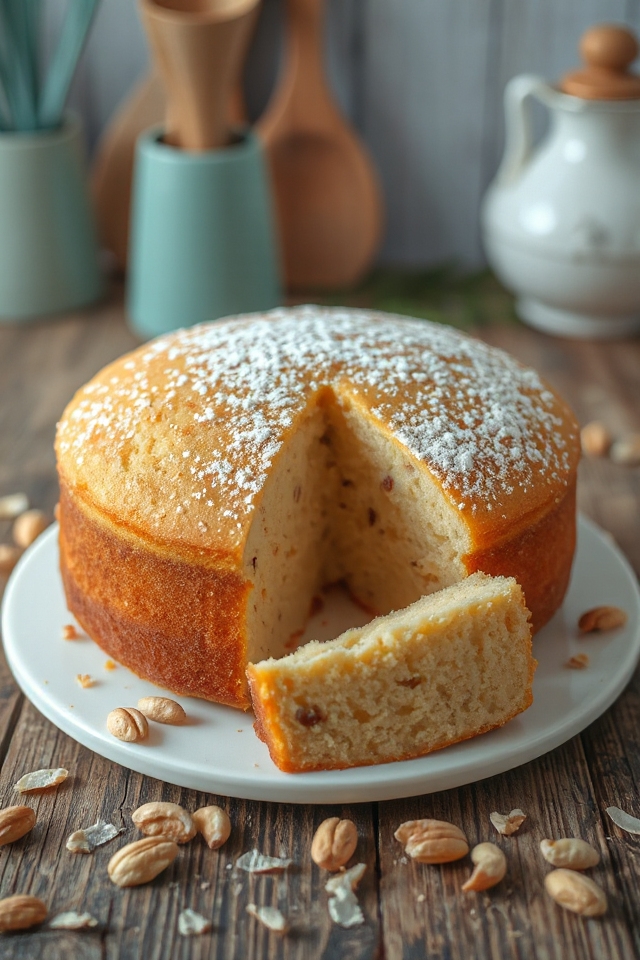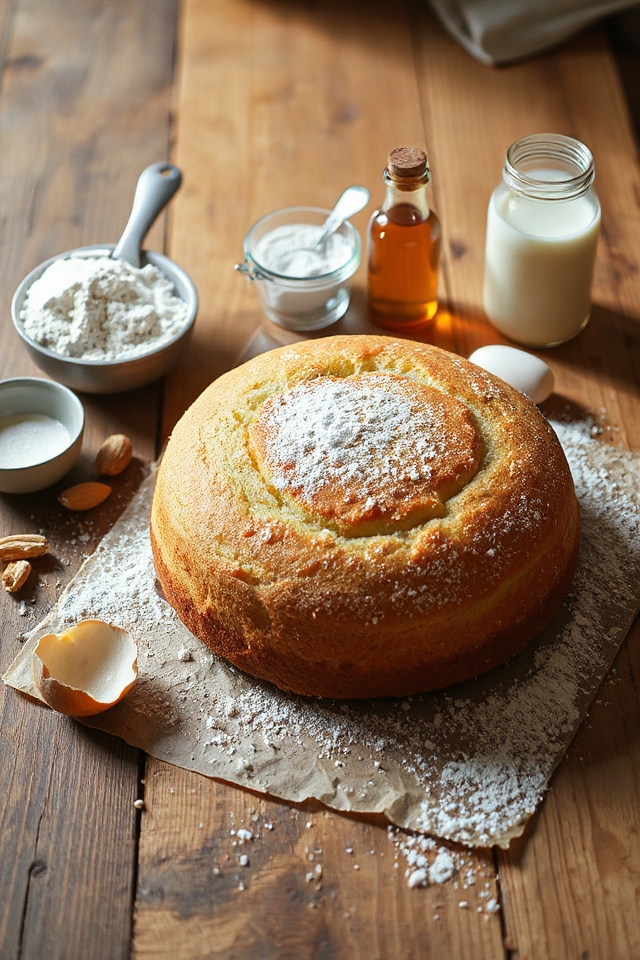Why You’ll Love This Vanilla Cake Recipe
When you take your first bite of this vanilla cake, you’ll instantly understand why it’s a favorite in my kitchen. The cake’s moist texture and delightful sweetness make it a perfect treat for any occasion.
I love how versatile it is; it pairs wonderfully with fresh fruit or a scoop of ice cream. Plus, it fills my home with the comforting aroma of vanilla while it bakes.
Whether I’m celebrating a birthday or just indulging on a quiet evening, this cake always hits the spot. Trust me, once you try it, you’ll keep coming back for more!
Ingredients of Vanilla Cake
When it comes to baking, having the right ingredients is key to whipping up a delicious vanilla cake. The great thing about this recipe is that it uses simple, everyday ingredients that you probably already have in your pantry.
There’s something so comforting about the smell of vanilla wafting through the house as it bakes, right? Let’s explore what you’ll need to make this delightful treat.
Ingredients:
- 1/2 cup shortening
- 1 cup sugar
- 2 eggs
- 2 cups flour
- 1 cup milk
- 3 teaspoons baking powder
- 1 tablespoon vanilla
- 1 cup nuts, ground (optional)
Now, let’s talk about these ingredients a bit. Shortening gives the cake that lovely moist texture we all crave, but if you’re looking for a healthier alternative, you could consider using butter instead.
Just know that butter will add a richer flavor—yum! And speaking of flavor, don’t skimp on the vanilla. It’s the star of the show here, so grab the good stuff if you can.
The nuts? They’re totally optional, but they add a nice crunch and a little something extra if you’re in the mood for it. If you’re like me and sometimes forget to check your pantry before starting a baking project, this is an easy recipe to adapt based on what you have available.
How to Make Vanilla Cake

When it comes to making a vanilla cake, it’s all about embracing the simple process, right? First things first, grab your mixing bowl and let’s start with 1/2 cup of shortening. You’ll want to cream that together with 1 cup of sugar until it’s nice and fluffy. This step is essential because it’s where the magic begins—trust me, your cake will be much happier if you don’t skip this part.
After that, toss in 2 eggs, one at a time, and beat them in well. If you’re like me and sometimes end up with egg shells in the mix—oops—just fish them out like a pro and keep going.
Next up, we’re going to add in the dry ingredients. Combine 2 cups of flour and 3 teaspoons of baking powder in a separate bowl, then gradually mix that into your creamed concoction, alternating with 1 cup of milk. This is the part where you can really get into the rhythm of mixing. It’s like a dance—just be careful not to make a flour cloud all over your kitchen.
Once everything is well combined, don’t forget to stir in 1 tablespoon of vanilla and, if you’re feeling adventurous, 1 cup of ground nuts for that delightful crunch. Now, pour your batter into a greased and floured pan, and just like that, it’s time to bake!
Preheat your oven to 350 degrees and place your cake in for about 30 minutes. You’ll know it’s done when the top springs back when you gently touch it. Try not to open the oven door too soon; I mean, nothing crushes a baker’s spirit quite like a sunken cake.
Once it’s finished, let it cool for a bit in the pan before transferring it to a wire rack. And there you have it—a lovely, homemade vanilla cake, ready for frosting, or just a dusting of powdered sugar if you’re feeling low-key. Enjoy the process, and remember, even if it doesn’t turn out perfect, it’s still a cake, and that’s always a reason to celebrate.
Vanilla Cake Substitutions & Variations
While baking a vanilla cake is a delightful experience, experimenting with substitutions and variations can elevate your creation even further.
For a richer flavor, I often swap half the milk for sour cream or yogurt. If I want a gluten-free option, I use almond or coconut flour.
Adding citrus zest can brighten the taste, while incorporating spices like cinnamon or nutmeg creates warmth. I’ve even tried mixing in fruit purees for a unique twist.
And don’t forget about different extracts—almond or coconut can add an exciting depth. Each variation is an opportunity to make the cake truly your own!
Additional Tips & Notes
Experimenting with substitutions and variations can truly enhance your vanilla cake, but there are also a few tips that can help guarantee success with any recipe.
Always preheat your oven; this guarantees even baking. I recommend using room temperature ingredients for a smoother batter. Don’t overmix—just combine until you see no flour.
If you’re adding nuts, toast them first for extra flavor. Finally, let your cake cool in the pan for about 10 minutes before transferring it to a wire rack.
Following these tips will help you achieve a moist, delicious vanilla cake every time you bake!
